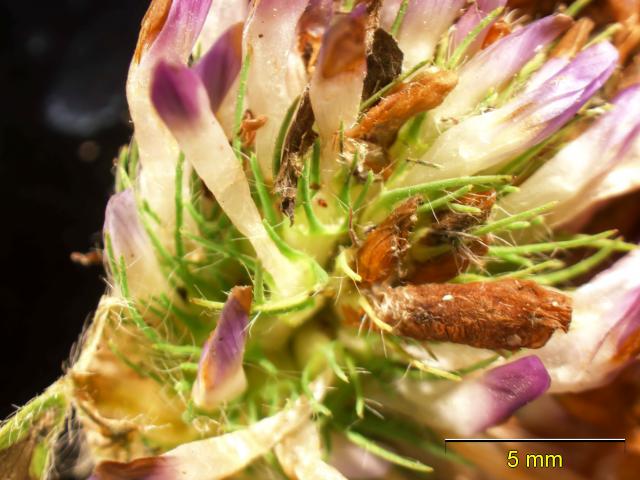
The red clover casebearer moth has been found from North Otago to North Canterbury in red clover crops, as well as in Auckland.
The small moth, which is about 8mm long, is similar to other species of clover casebearer moths that are already well established in New Zealand, but its host plant is usually red clover.
Farmers attending the Foundation For Arable Research autumn roundup meetings this month heard the pest is likely to have been in the country for some time, as it has been found in three-yearold crops.
Its potential effect on clover seed production is uncertain, although it has been recorded as a severe pest in Canada and an infrequent pest in Europe.
Adult moths appear in spring and summer, laying eggs on the red clover flower head.
Damage is caused by the larvae feeding on the developing seeds in the florets over summer.
Older larvae construct a case around themselves and continue to feed on seed inside the florets. The moths spend winter as mature larvae.
Phil Rolston, senior research adviser with Far, told the meeting in Ashburton that while there were a number of parasitoids already in the country which will attack the clover casebearer moth, their distribution was not known.
Some were introduced to control the moth which attacks white clover but it is not known if they will attack the red clover casebearer moth.
"We don’t have a good handle on the timing of the red clover casebearer moth," he said, and it had not been possible to target adults when they were flying.
Far is consulting with Oregon State University as to how to conduct surveillance on the moth.
Insecticides registered for the control of casebearer in clover seed crops are dichlorvos and tau-flavate.
Red clover thrip has been found in large numbers on red clover seed crops this summer, ranging from none to 168 per flowerhead.
Onion thrips have also been found in large numbers on red clover seed crops. This thrip could be more damaging than the red clover thrip.
